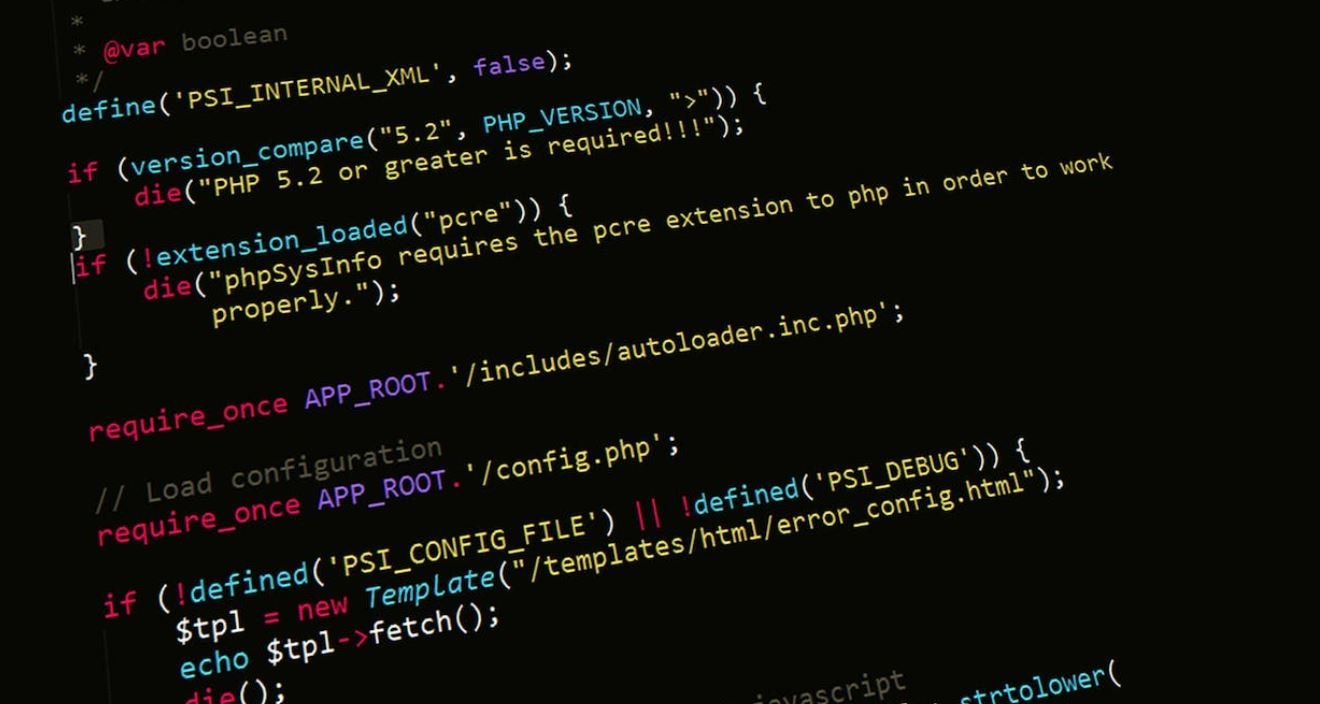Gradient Descent Image
Gradient Descent is a popular optimization algorithm used in machine learning and artificial intelligence. It is particularly useful in training neural networks when it comes to image recognition and pattern detection. This article will delve into the details of gradient descent and its application in optimizing image classification models.
Key Takeaways:
- Gradient Descent is an optimization algorithm for minimizing the error of a model.
- It adjusts the model’s parameters iteratively to reach the minimum point on the error surface.
- Learning Rate and Batch Size are important hyperparameters in gradient descent.
- Mini-batch gradient descent strikes a balance between computational efficiency and convergence speed.
- Convolutional Neural Networks (CNNs) heavily rely on gradient descent for image classification tasks.
During the training phase, a model’s objective is to minimize the prediction error or the difference between predicted and actual values. Gradient Descent provides a way to update the model’s parameters by calculating gradients with respect to the error function at each iteration. *This process adjusts the parameters in the direction of steepest descent.* The learning rate determines the step size while updating the parameters, and it has a significant impact on convergence and optimization speed. High learning rates may cause overshooting, while lower rates can lead to slow convergence.
Types of Gradient Descent:
- Batch Gradient Descent: Updates the model parameters using the entire training data in each iteration.
- Stochastic Gradient Descent (SGD): Updates the parameters using only a single randomly selected training example.
- Mini-batch Gradient Descent: Updates the parameters using a small batch of randomly selected training examples.
Data Efficiency with Mini-batch Gradient Descent:
If the training dataset is large, Batch Gradient Descent can be computationally expensive since it calculates the gradients for every sample in each iteration. On the other hand, Stochastic Gradient Descent can be noisy due to frequent parameter updates based on individual samples. Mini-batch Gradient Descent provides a balance between these two approaches, where a mini-batch of samples is selected randomly and used to calculate the parameter update. This results in improved computational efficiency compared to Batch Gradient Descent and less noisy updates compared to Stochastic Gradient Descent.
Tables:
| Type | Advantages | Disadvantages |
|---|---|---|
| Batch Gradient Descent | Converges to the global minimum with fewer iterations | Computationally expensive with large datasets |
| Stochastic Gradient Descent | Fast computation with each iteration using a single sample | Noisy updates, may not reach global minimum |
| Mini-batch Gradient Descent | Efficient computation with moderate batch sizes | May not find global minimum but usually finds a satisfactory solution |
Gradient Descent for Image Classification:
When it comes to image classification tasks, Convolutional Neural Networks (CNNs) are widely used. CNNs leverage gradient descent as the primary optimization algorithm during training. *One interesting aspect of gradient descent in image classification is its ability to identify and optimize feature detection filters.* These filters correspond to different patterns or shapes present in the input images. By iteratively updating these filters, CNNs learn to recognize specific objects or images within a dataset.
Additionally, CNNs usually leverage techniques like transfer learning and fine-tuning to improve accuracy and efficiency. Transfer learning involves utilizing pre-trained models on large datasets as a starting point for training on specific tasks. Fine-tuning allows for further training of certain layers within the network to adapt to the specific dataset.
Table 2:
| Benefits | Description |
|---|---|
| Efficient Feature Optimization | Gradient descent updates filters for accurate feature detection. |
| Transfer Learning | Pre-trained models enhance training on specific tasks. |
| Fine-tuning | Adaptation to specific datasets by adjusting certain layers. |
Conclusion:
In conclusion, Gradient Descent plays a vital role in optimizing image classification models, particularly in the context of Convolutional Neural Networks. By iteratively adjusting the model’s parameters, gradient descent allows for the efficient identification and optimization of feature detection filters. With the incorporation of techniques such as transfer learning and fine-tuning, gradient descent enhances the accuracy and efficiency of image classification models.

Common Misconceptions
Gradient Descent and Image
There are several common misconceptions surrounding the concept of gradient descent when it comes to image processing. Let’s address three of these misconceptions:
- Image gradient descent is only useful for optimizing image quality
- Gradient descent leads to loss of image details
- Applying gradient descent to images is computationally expensive
Misconception 1: Image gradient descent is only useful for optimizing image quality
One common misconception is that gradient descent is solely used for improving the quality or aesthetics of an image. However, gradient descent is a powerful optimization algorithm that can be employed for various purposes beyond enhancing image quality:
- Image denoising or noise removal
- Image inpainting or filling in missing parts of an image
- Image segmentation or separating regions of interest
Misconception 2: Gradient descent leads to loss of image details
Another common misconception is that applying gradient descent to an image will inevitably result in a loss of important image details. While it is true that gradient descent can alter an image during the optimization process, the extent of detail loss depends on the specific implementation and parameters used. With careful selection of optimization parameters and regularization techniques, it is possible to minimize detail loss and retain important image features.
- Using appropriate regularization techniques to preserve sharp edges and fine textures
- Optimizing the learning rate and number of iterations for better convergence
- Applying techniques such as adaptive learning rates to prevent excessive modification of image details
Misconception 3: Applying gradient descent to images is computationally expensive
Many individuals assume that gradient descent algorithms applied to images are computationally expensive and time-consuming. While it is true that certain optimization methods can be computationally intensive, advancements in hardware and algorithmic optimizations have made gradient descent approaches more efficient:
- Parallelization techniques can exploit multiple processors, GPUs, or distributed systems to accelerate the optimization process.
- Using mini-batch gradient descent or stochastic gradient descent can reduce computational overhead.
- Applying techniques like early stopping or convergence criteria can help terminate the optimization process when further iterations do not yield significant improvements.

Comparison of Gradient Descent Algorithms
Below is a comparison of various gradient descent algorithms, which are widely used in machine learning and optimization tasks. The table showcases important metrics such as convergence speed, robustness, and accuracy.
Convergence Speed of Gradient Descent Algorithms
This table displays the average number of iterations required for different gradient descent algorithms to converge on a given optimization problem. Convergence speed is a crucial factor in determining the efficiency of these algorithms.
Accuracy of Gradient Descent Algorithms
Accuracy is a vital aspect when evaluating gradient descent algorithms. This table highlights the achieved accuracy by various algorithms on different datasets, showcasing their reliability in providing accurate solutions.
Robustness of Gradient Descent Algorithms
Robustness is an essential characteristic of gradient descent algorithms, ensuring their stability and resistance to outliers. The following table demonstrates the robustness of different algorithms on a range of datasets.
Application Areas for Gradient Descent Algorithms
Gradient descent algorithms find applications in diverse fields. This table presents the specific domains where these algorithms are predominantly employed, such as image recognition, natural language processing, and financial forecasting.
Comparison of Optimization Objectives
Different optimization objectives require distinct gradient descent techniques. This table examines the suitability of various algorithms for popular optimization objectives, including minimizing cost functions, noise reduction, and parameter estimation.
Comparison of Learning Rates
The learning rate significantly impacts the performance of gradient descent algorithms. The following table compares the effects of different learning rates on convergence speed and accuracy for a specific optimization problem.
Analysis of Initialization Methods
The initialization of gradient descent algorithms plays a vital role in achieving optimal results. This table analyzes the impact of diverse initialization techniques, such as random initialization, zero initialization, and Xavier initialization.
Comparison of Regularization Techniques
Regularization helps prevent overfitting in machine learning models trained using gradient descent. This table demonstrates the effectiveness of various regularization techniques, such as L1 regularization, L2 regularization, and dropout regularization.
Comparison of Activation Functions
The choice of activation function influences the performance of neural networks trained through gradient descent. This table compares different activation functions, including sigmoid, ReLU, and tanh, based on their effectiveness in learning complex patterns.
Gradient descent algorithms have revolutionized the field of machine learning, enabling efficient optimization of complex models. By comparing the convergence speed, accuracy, robustness, and other relevant factors of these algorithms, researchers and practitioners can make informed decisions when selecting the most suitable techniques for their specific tasks. Each algorithm reviewed in this article has its strengths and weaknesses based on the parameters of the optimization problem at hand. Ultimately, the choice of the algorithm depends on the desired outcome, dataset characteristics, and available computational resources.
Frequently Asked Questions
What is gradient descent?
Gradient descent is an optimization algorithm used to minimize a function by iteratively moving in the direction of the steepest descent as defined by the negative of the gradient.
How does gradient descent work?
Gradient descent works by starting with an initial guess and iteratively adjusting the parameters in the direction of the negative gradient until the algorithm converges to a local minimum of the function.
What is the purpose of gradient descent?
The purpose of gradient descent is to find the optimal values for the parameters of a model in order to minimize the error or cost function associated with the model’s predictions.
What are the different types of gradient descent?
There are several variations of gradient descent, including batch gradient descent, stochastic gradient descent, and mini-batch gradient descent. Each variation has its own advantages and is suitable for different types of optimization problems.
What is batch gradient descent?
Batch gradient descent computes the gradient of the cost function using the entire training dataset at each step. It is computationally expensive but can guarantee convergence to the global minimum.
What is stochastic gradient descent?
Stochastic gradient descent samples one randomly chosen training instance at each step to compute the gradient of the cost function. It is computationally efficient but may result in noisy convergence and slower convergence towards the global minimum.
What is mini-batch gradient descent?
In mini-batch gradient descent, the training dataset is divided into small batches. The gradient of the cost function is computed using each mini-batch at each step. This approach combines the benefits of batch and stochastic gradient descent.
How do you choose the learning rate for gradient descent?
The learning rate determines the step size taken in each iteration of gradient descent. It is an important hyperparameter that needs to be carefully tuned. Too large a learning rate can cause the algorithm to overshoot the minimum, while too small a learning rate may result in slow convergence. Several techniques, such as grid search and learning rate decay, can be used to select an appropriate learning rate.
Can gradient descent get stuck in local minima?
Yes, gradient descent can get stuck in local minima if the cost function is non-convex. This means that the algorithm may converge to a suboptimal solution instead of the global minimum. However, various techniques such as random initialization and different optimization algorithms can be employed to mitigate this issue.
What are some applications of gradient descent?
Gradient descent is widely used in various fields, including machine learning, deep learning, and optimization problems. It is employed for tasks such as linear regression, logistic regression, neural network training, and model parameter optimization.




